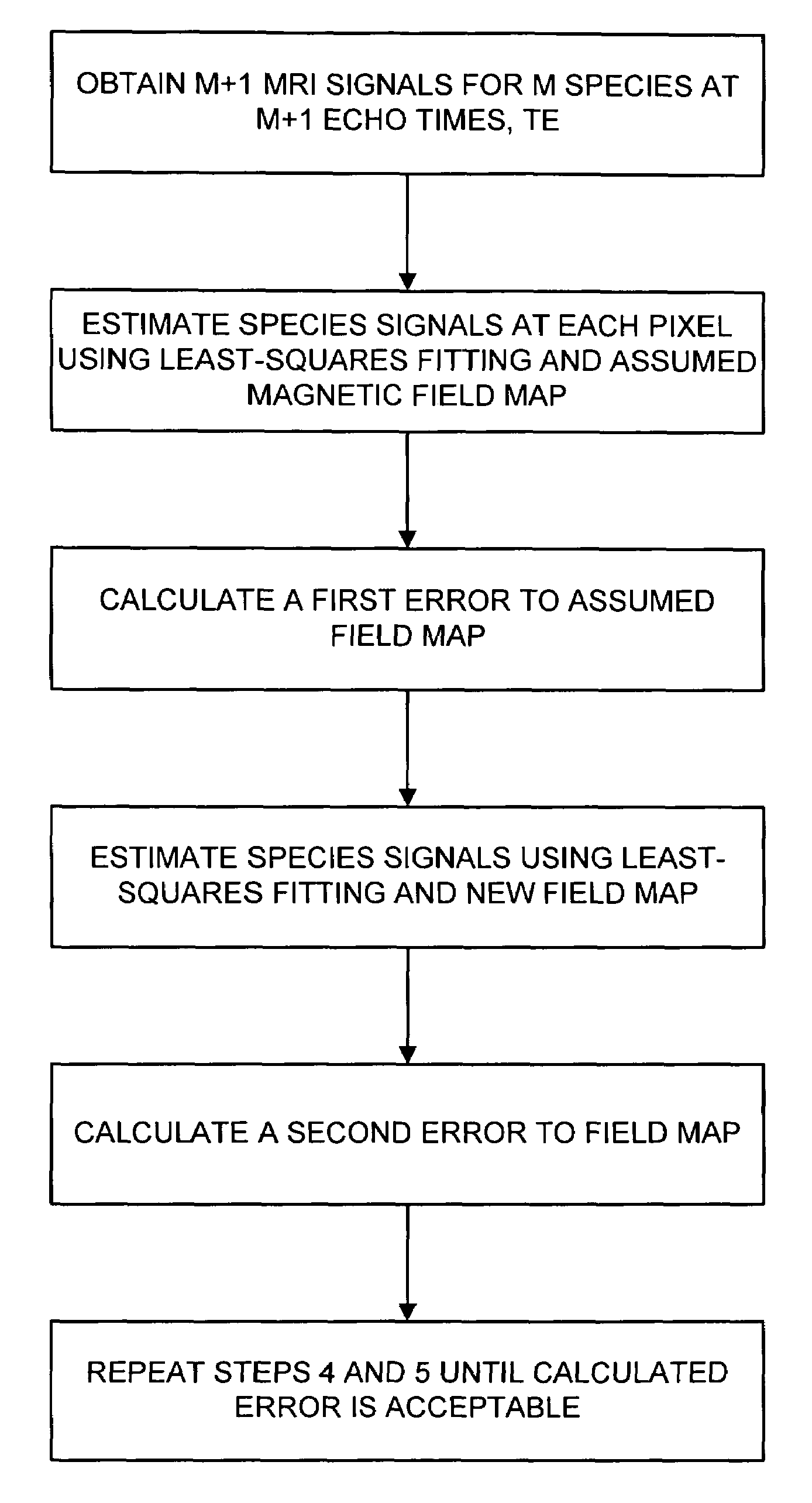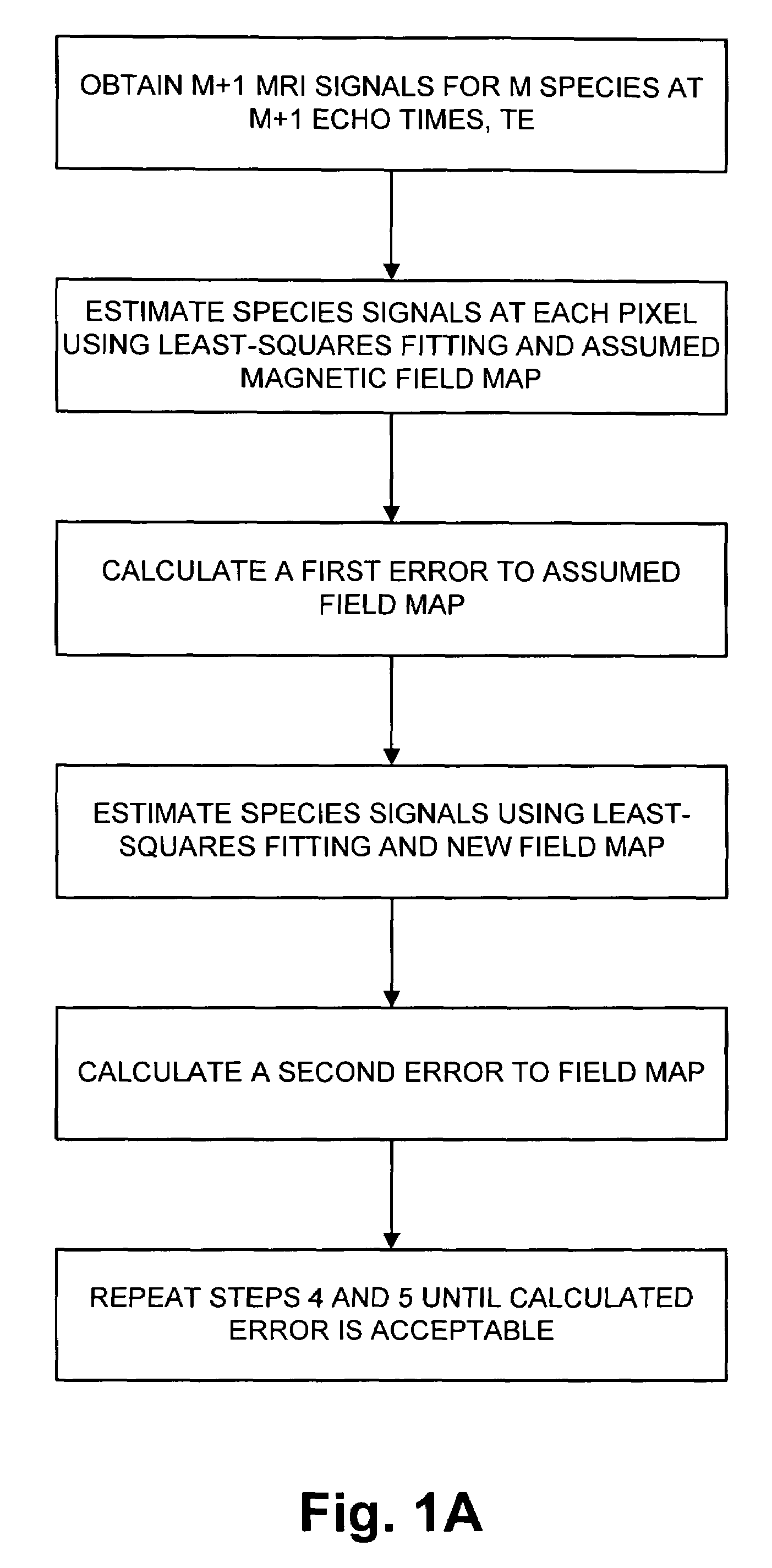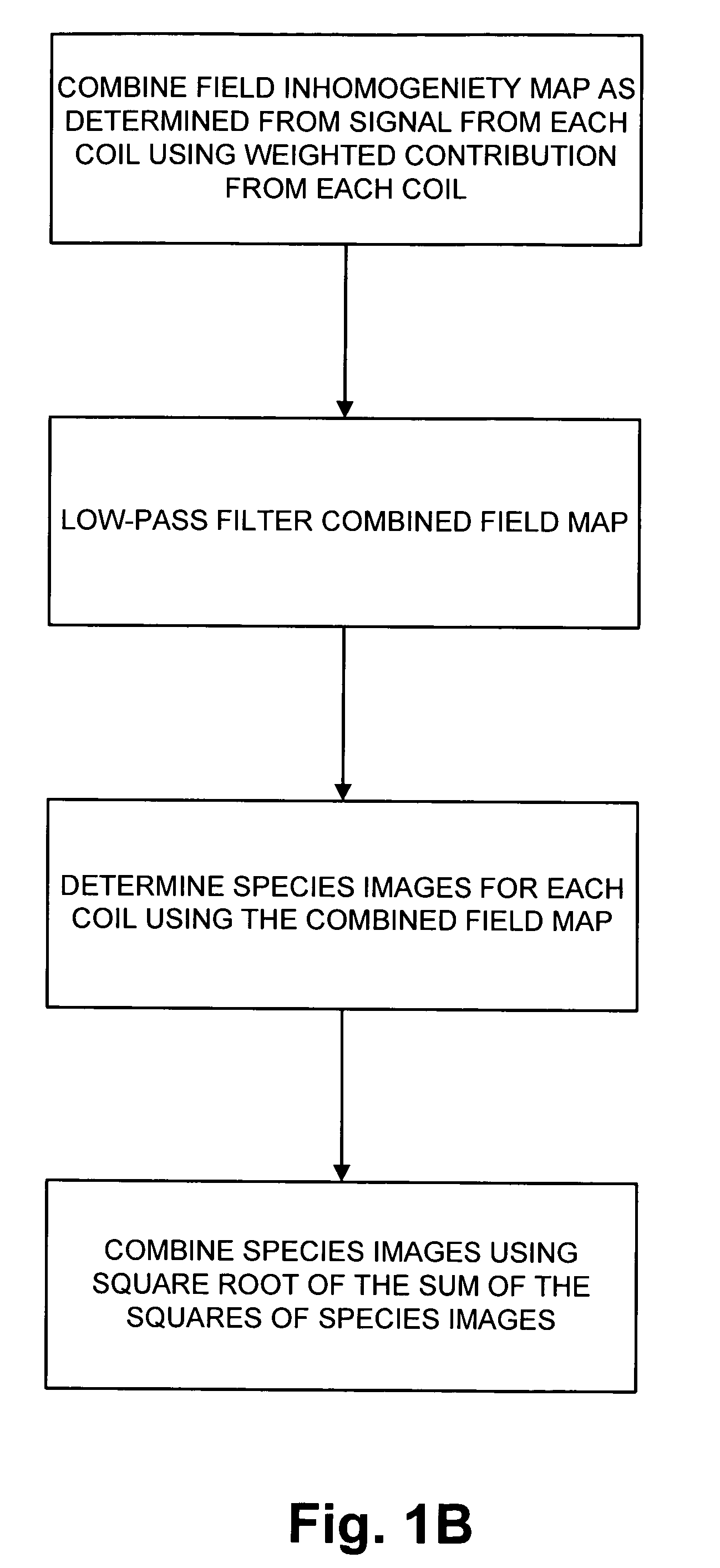Magnetic resonance imaging of different chemical species in a system having magnetic field heterogeneities
a magnetic field heterogeneity and chemical species technology, applied in the field of species imaging in the presence of magnetic field heterogeneity, can solve the problems of severe image degradation, limited application of “dixon” imaging to fast spin-echo sequences, and difficult decomposition of different chemical species, so as to facilitate the estimation of water and fat images and improve noise performan
- Summary
- Abstract
- Description
- Claims
- Application Information
AI Technical Summary
Benefits of technology
Problems solved by technology
Method used
Image
Examples
Embodiment Construction
[0018]The present invention provides a new method for implementing fat-water separation utilizing a novel iterative least-squares method that reconstructs data acquired at short echo time increments, yielding images with high SNR and uniform separation of fat signal from water signal. The algorithm summarized in FIG. 1 extends naturally to multi-coil reconstruction with minimal additional complexity as summarized in FIG. 2. Single and multi-coil decompositions derived from images obtained at both 1.5 T and 3.0 T are shown. Examples in the knee, ankle, pelvis and heart are shown. An analysis of the noise performance of this method is provided and methods for improving noise performance through field map smoothing are discussed.
[0019]As noted above, the use of short echo times is necessary with SSFP to maintain short TR, thereby preventing image degradation from field heterogeneities. Three point methods described previously by Glover describe the special case of phase shifts of 0, π,...
PUM
 Login to View More
Login to View More Abstract
Description
Claims
Application Information
 Login to View More
Login to View More - R&D
- Intellectual Property
- Life Sciences
- Materials
- Tech Scout
- Unparalleled Data Quality
- Higher Quality Content
- 60% Fewer Hallucinations
Browse by: Latest US Patents, China's latest patents, Technical Efficacy Thesaurus, Application Domain, Technology Topic, Popular Technical Reports.
© 2025 PatSnap. All rights reserved.Legal|Privacy policy|Modern Slavery Act Transparency Statement|Sitemap|About US| Contact US: help@patsnap.com



